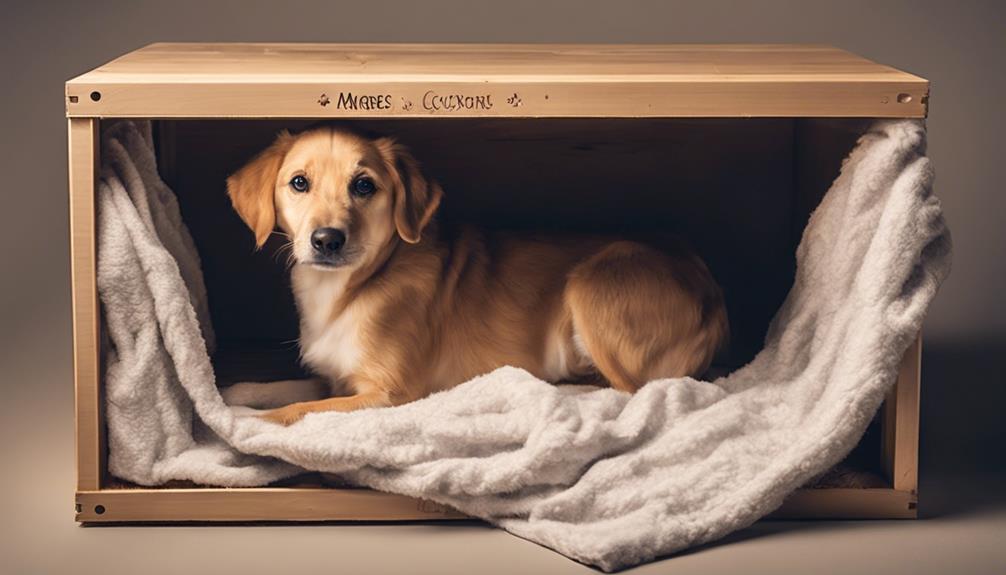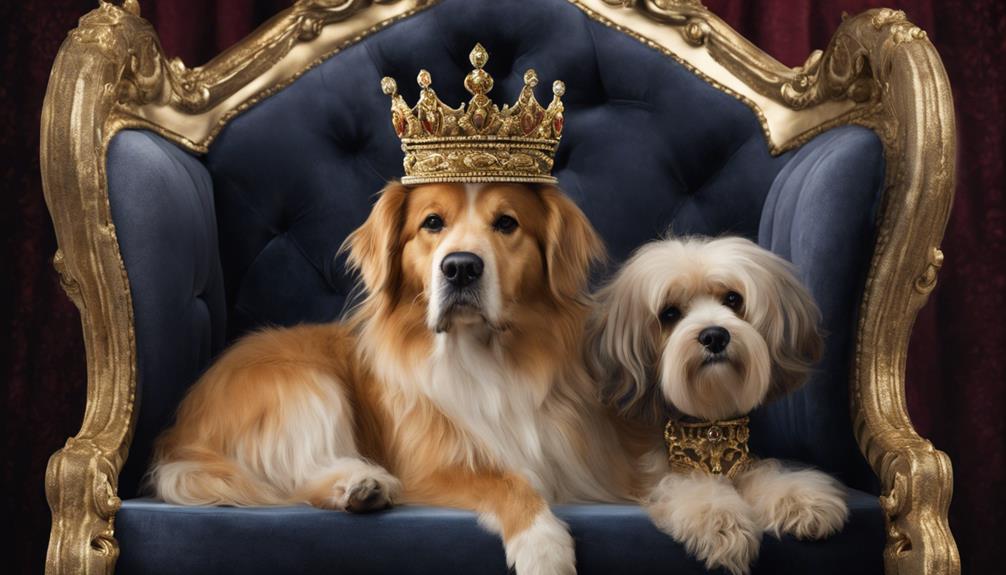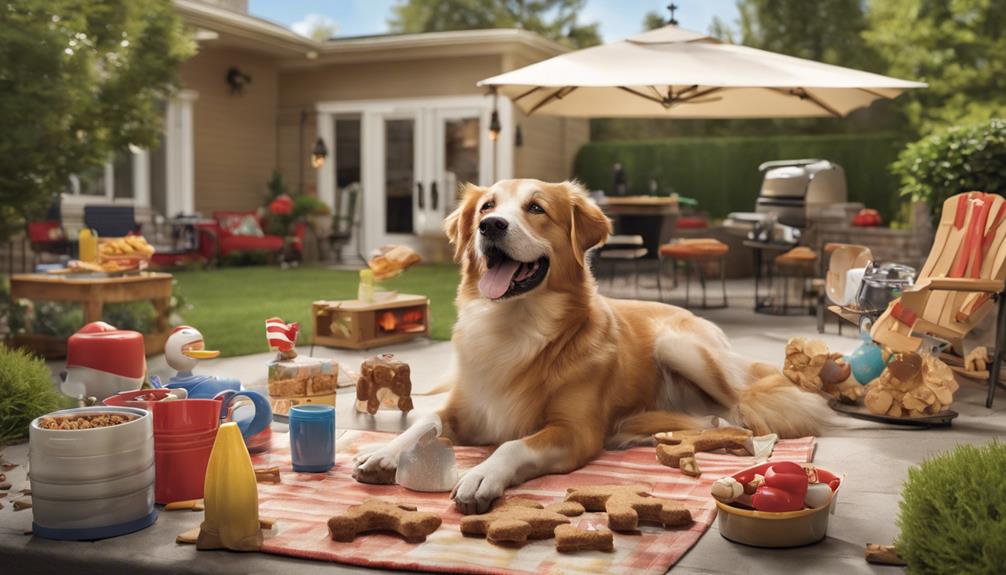When striving for the ultimate success in crate training your dog, it is important to adhere to a well-structured schedule. This includes incorporating benefits such as house training, establishing a routine for bladder control, creating positive associations with the outdoors, and building a crucial environment. It is essential to gradually increase crate time, utilize rewards, maintain consistency, and adapt to the individual needs of your dog. By following these steps, you can achieve success and strengthen the bond with your furry friend.
More insights await on how to perfect your crate training approach.
Key Takeaways
- Start with short intervals, gradually increase crate time.
- Monitor behavior and comfort at each stage.
- Use positive reinforcement and rewards for longer durations.
- Establish a consistent routine for extending crate time.
- Create a sense of security and predictability within the crate.
Benefits of Crate Training
Crate training offers numerous advantages for both dogs and their owners, greatly contributing to the overall well-being and behavior of the canine companions. When implementing a crate training schedule, consistency is key. By crate training your dog, you establish a routine that aids in house training and teaches your pet to control their bowels and bladder effectively. This not only reduces accidents inside the house but also creates a positive association between the crate door opening and going outside for elimination.
Positive reinforcement during training sessions helps your puppy associate the crate with a safe and comfortable space, promoting a sense of security. Additionally, ensuring access to food and water during appropriate times within the crate aids in acclimating your pet to the crate. As your dog gets used to the crate, it becomes a retreat where they feel secure and relaxed. This sense of security can greatly impact their overall behavior and well-being.
Importance of Positive Association

Establishing a positive association with the crate plays an essential role in successful crate training for dogs. Creating a pleasant experience for your furry friend inside the crate helps reduce their anxiety and stress levels, making it a comfortable space they enjoy being in. By using treats, toys, and praise during crate time, you can reinforce good behavior and encourage voluntary entry into the crate.
This positive association not only aids in effective training but also contributes to building a strong bond between your dog and their crate. Consistent experiences of positivity within the crate environment won't only make the training process more enjoyable but also help your dog feel secure and content in their crate.
Gradual Time Increase Strategy
Starting with short intervals and gradually increasing crate time proves to be an effective strategy for acclimating dogs to prolonged crating periods. By starting with small increments of time in the crate, dogs can become more comfortable and relaxed in their confined space. It's essential to monitor the dog's behavior and comfort level during each stage of the gradual increase to make sure they're adapting positively. Positive reinforcement and rewards play an important role in encouraging good behavior and creating a positive association with longer crate durations.
Consistency is key when implementing this gradual time increase strategy. A consistent routine and schedule for extending crate time help the dog adapt steadily and successfully. This method allows the dog to develop a sense of security and predictability within their crate, reducing any anxiety or stress associated with confinement. By following this approach, pet owners can effectively train their dogs to spend extended periods in a crate while maintaining their well-being and comfort.
Incorporating Rewards for Good Behavior

When incorporating rewards for good behavior in crate training, we should use treats strategically and apply positive reinforcement techniques.
By rewarding positive actions, we can strengthen the bond between the dog and the owner while encouraging the desired behaviors.
This approach fosters a positive mindset towards the crate, increasing the likelihood of successful training outcomes.
Use Treats Strategically
To effectively reinforce positive behavior during crate training, strategically incorporate high-value treats like small pieces of cooked chicken or cheese. Reward your dog immediately after they exhibit the desired behavior in the crate to create a strong association.
Treat strategically by offering rewards only when your dog is calm and quiet in the crate to encourage relaxed behavior. Gradually decrease the frequency of treats as your dog becomes more comfortable and accustomed to the crate. Consistent treat reinforcement helps build a positive association with the crate, making it a pleasant and rewarding experience for your dog.
- Reward promptly to strengthen the positive behavior association.
- Use treats strategically for calm and quiet crate behavior.
- Consistent reinforcement fosters a pleasant crate experience.
Positive Reinforcement Techniques
Incorporating rewards for good behavior, such as treats or praise, is a fundamental aspect of positive reinforcement techniques during crate training for dogs. By rewarding desired behavior with treats, you create a positive association with the crate, enhancing your dog's comfort and sense of security.
This positive reinforcement helps reduce anxiety and stress related to crate training, making it a more positive experience overall. Consistent use of rewards for good behavior reinforces the idea that the crate is a safe and enjoyable space for your dog.
Through these techniques, you can effectively shape your dog's behavior and set the stage for a successful crate training journey that fosters a strong bond and a happy, well-adjusted pet.
Consistency and Patience in Training

Consistency and patience play essential roles in crate training, ensuring dogs adapt successfully to the new routine. Consistent schedules help dogs understand expectations, establish a routine, and reduce anxiety during crate training. Patience is key in allowing dogs to adjust gradually to the new routine, fostering a positive association with the crate.
By following a predictable routine, dogs feel secure and comfortable in their crates, leading to successful outcomes. It's important to build a routine that's both structured and adaptable to individual needs, providing a sense of stability for the dog. This approach not only aids in training but also strengthens the bond between the owner and the dog.
Understanding Individual Dog Needs

Understanding a dog's individual needs is essential for tailoring an effective crate training schedule that promotes successful adaptation and learning. When crafting a crate training schedule, it's vital to take into account factors such as the dog's age, breed, size, and temperament.
By recognizing your dog's comfort level with the crate through behavioral cues, you can adjust the training schedule to accommodate their needs. Address any anxiety or fear your dog may have towards the crate with patience and positive reinforcement to create a positive association.
Evaluating your dog's energy levels is also key; make sure the schedule includes ample exercise and mental stimulation. Monitoring your dog's progress throughout the training process allows you to make necessary modifications based on their responses and behaviors.
Frequently Asked Questions
What Is a Good Crate Training Schedule?
A good crate training schedule involves regular bathroom breaks, playtime, meals, and rest intervals. Structured sessions throughout the day help establish routine and positive behavior. Consistency is key in setting boundaries and promoting relaxation for the puppy.
What Is the Best Crate Training Technique?
We've found that gradually introducing crate training with positive reinforcement creates a cozy environment for our furry friends. Consistent cues and rewards help strengthen good behavior. Combining routines and praise guarantees success in crate training.
How Many Times a Day Should You Work on Crate Training?
We aim for 3-4 short crate training sessions daily. Consistent, frequent training reinforces positive crate associations. Varying session times helps dogs generalize crate behavior. Adjust training frequency based on progress, gradually increasing duration. Consistency and positivity are key for successful crate training.
How Long Does It Take for Crate Training to Work?
Understanding the unique aspects of each dog's journey impacts the timeline for crate training success. Patience, consistency, and positive reinforcement expedite the process. Puppies typically adapt quicker due to their malleability. Adjusting the training approach based on progress enhances effectiveness.
Can a Crate Training Schedule Be Adapted for Owners with Busy Work Schedules?
Yes, the ultimate crate training schedule can be adapted for owners with busy work schedules. By adjusting the timing for crate sessions and incorporating short breaks for potty breaks and exercise, even owners with limited availability can successfully crate train their dogs.
Conclusion
To summarize, consistent and patient crate training is essential for ultimate success. Remember to gradually increase time spent in the crate, incorporate rewards for good behavior, and understand your individual dog's needs.
By following this schedule, you can create a positive association with the crate, leading to a happy and well-behaved pup. Consistency is vital in crate training, so stick to the schedule and watch your furry friend flourish!










